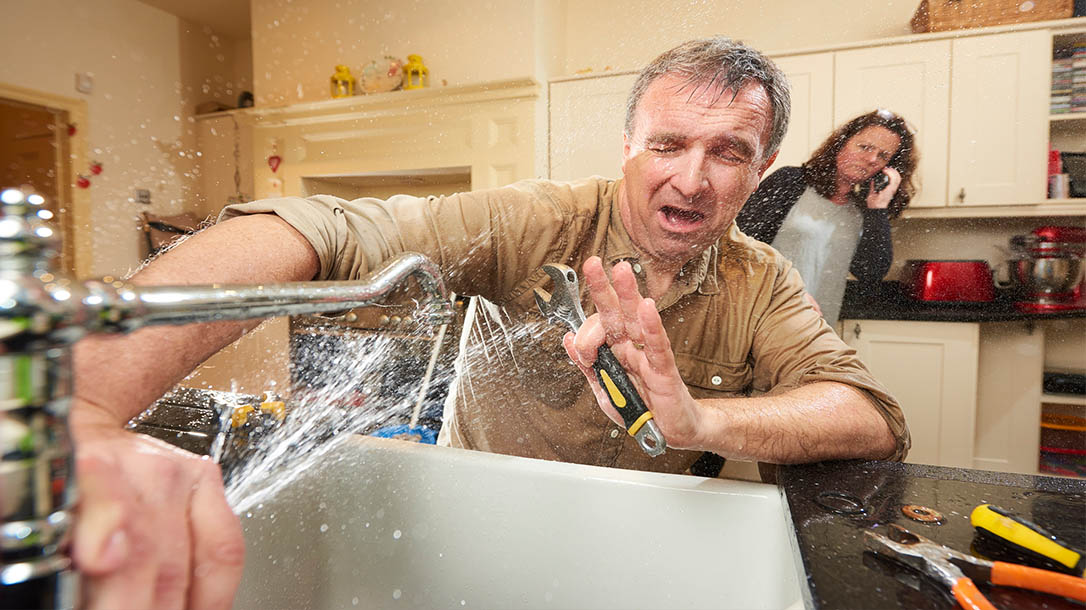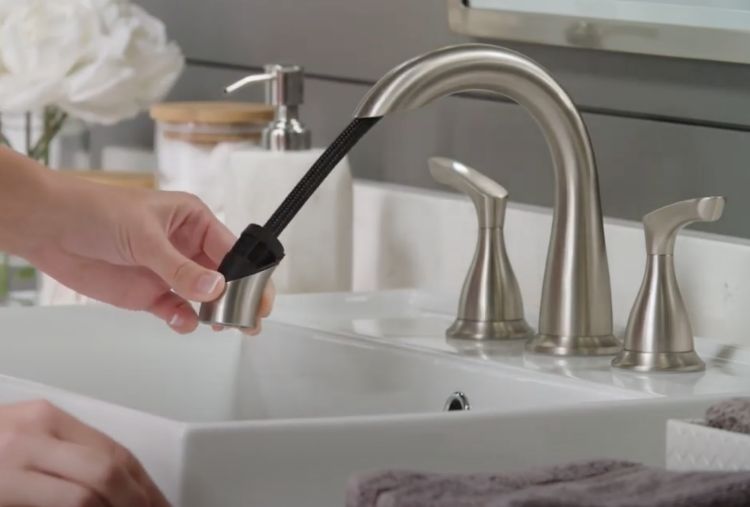Understanding the Importance of Fixing a Dripping Faucet
Understanding the Importance of Fixing a Dripping Faucet
Blog Article
Do you find yourself on the lookout for information and facts involving What Causes Leaky Faucets & How To Fix Them?

Trickling faucets might feel like a minor trouble, however their impact goes beyond just the nuisance of the sound. From drainage to incurring unnecessary financial expenses and wellness threats, ignoring a leaking tap can lead to different effects. In this short article, we'll explore why it's essential to resolve this usual house problem promptly and efficiently.
Waste of Water
Ecological Influence
Dripping faucets contribute dramatically to water wastage. According to the Environmental Protection Agency (EPA), a solitary tap dripping at one drip per second can waste greater than 3,000 gallons of water annually. This not only pressures water resources however additionally impacts ecosystems and wildlife dependent on them.
Step-by-Step Guide to Repairing a Dripping Tap
Tools Required
Prior to trying to take care of a trickling faucet, collect the essential devices, consisting of a flexible wrench, screwdrivers, substitute components (such as washers or cartridges), and plumber's tape.
Usual Faucet Issues and Their Solutions
Recognize the kind of faucet and the specific issue triggering the drip. Usual issues consist of worn-out washers, rusty shutoff seats, or damaged O-rings. Refer to supplier directions or on the internet tutorials for detailed support on fixings.
Financial Costs
Raised Water Bills
Past the environmental influence, leaking taps can blow up water bills considerably. The gathered wastefulness in time converts into greater utility costs, which can have been avoided with prompt fixings.
Possible Home Damages
Additionally, prolonged leaking can result in harm to components and surface areas bordering the faucet. Water buildup can cause staining, corrosion, and even architectural concerns if left neglected, resulting in added repair work expenses.
Health and wellness Issues
Mold And Mildew and Mold Development
The constant visibility of wetness from a dripping tap produces an optimal atmosphere for mold and mildew and mildew development. These fungi not only compromise indoor air top quality but also posture health and wellness dangers, particularly for individuals with breathing conditions or allergic reactions.
Waterborne Illness
Stationary water in trickling faucets can become a breeding place for germs and various other virus, raising the risk of waterborne diseases. Pollutants such as Legionella germs thrive in stagnant water, potentially bring about serious diseases when consumed or breathed in.
DIY vs. Expert Repair service
Pros and Cons of DIY Repair Service
While some might try to fix a leaking faucet themselves, DIY fixings come with their very own set of obstacles. Without correct expertise and tools, DIY efforts can aggravate the concern or cause incomplete fixings, extending the problem.
Benefits of Employing an Expert Plumber
Hiring a specialist plumber guarantees that the underlying reason for the dripping faucet is attended to successfully. Plumbers have the competence and devices to identify and repair tap concerns successfully, conserving time and decreasing the risk of additional damage.
Ecological Responsibility
Private Contribution to Preservation
Taking duty for dealing with dripping faucets lines up with more comprehensive efforts toward water conservation and ecological sustainability. Every individual's actions jointly make a substantial influence on maintaining precious resources.
Sustainable Living Practices
By prioritizing prompt repairs and embracing water-saving practices, individuals add to sustainable living practices that profit both existing and future generations.
Preventive Measures
Regular Upkeep Tips
To prevent dripping faucets, perform regular maintenance such as cleansing aerators, inspecting for leakages, and changing damaged components promptly. Additionally, consider setting up water-saving devices or updating to more effective fixtures.
Significance of Prompt Repair Works
Dealing with leaking faucets as quickly as they're seen stops more water wastefulness and possible damages, eventually saving both water and money over time.
Influence On Building Value
Understanding of Well-Maintained Residential Or Commercial Property
Preserving a home in good condition, consisting of attending to upkeep problems like trickling taps, improves its regarded value and charm among possible buyers or occupants.
Influence on Resale Worth
Residences with properly maintained plumbing fixtures, including faucets, command higher resale worths in the realty market. Addressing dripping taps can add to a positive impression during residential or commercial property assessments and arrangements.
Final thought
Resolving a leaking tap surpasses plain convenience; it's a necessary step toward conserving water, reducing financial costs, and securing wellness and property. Whether via DIY repair services or specialist help, doing something about it to fix dripping taps is a little yet impactful way to advertise liable stewardship of resources and contribute to a healthier, a lot more lasting future.
How to Fix a Leaky Faucet: Step-by-Step Repair Guide
A leaky faucet may seem like a simple annoyance, but if it's not fixed promptly, that leak could cost hundreds to potentially thousands. From water damage to mold, mildew, and high water bills, even a tiny leak can be catastrophic if left unattended. Damage like this can even affect the overall value of your home, so it's important to take the right approach for leaky faucet repair. You may need the help of a plumber in some cases, but we've got a few tips you can try on how to fix a leaky faucet before calling the pros.
Four Faucet Types
When you're learning how to fix a leaky faucet, the first step is knowing what kind of faucet you're working with! There are four common types.
Cartridge Faucets
Cartridge faucets come in one- or two-handled varieties. In one-handled cartridge faucets, hot and cold water combines in a single cartridge. In the two-handled versions, hot and cold water are controlled separately and mixed in the faucet.
Ball Faucets
Ball faucets have a single lever you push up and down to adjust the pressure and rotate to change the temperature. A slotted metal ball controls the amount of water allowed into the spout.
Compression Washer Faucets
They're the oldest type of faucet, but they're still used in many homes — especially older ones. Compression faucets have two separate handles that, when turned, raise or lower the washer that seals a water valve. This valve stops water from flowing through the faucet when it is turned off.
Disc Faucets
Disc faucets rarely need to be repaired due to their maintenance-free design. The water flow is controlled by two discs — the upper one raises and lowers against a fixed lower disc, creating a watertight seal. If your disc faucet starts leaking, you may need to replace the seals or clean residue buildup from the inlets.
Fixing a Leaky Faucet
Step 1: Turn Off the Water
Whether you're learning how to fix a leaky bathtub faucet or how to fix a leaky kitchen faucet, always turn off the water supply to your working area when you're fixing a leak. The last thing you want is a flood added to your list of things to fix.
Look for the shutoff valves below your sink or around the tub and turn them clockwise to stop the water flow. If your faucet doesn't have shutoff valves, you may need to turn off the water for the whole house. Check to make sure it's off by turning the faucet on. If nothing comes out, you're ready to start the repair.
Step 2: Take Apart the Faucet
How you disassemble your faucet depends on the type of fixture you have. You can use a flathead screwdriver to remove the caps on top of the handle or handles for cartridge and compression faucets. Inside, you should see handle screws. Unscrew these with a screwdriver to remove the handle.
Disc- and ball-style faucets will typically have an inlet screw near the handle, and removing that will reveal the interior of the faucet.
Detach the Valve Stem
For cartridge- and compression-style faucets, you'll see the inner valve stem or cartridge once you remove the faucet handles. If you have a compression faucet, unscrew the brass valve stem. If you have a cartridge faucet, pull out the cartridge. If your cartridge has been in place for a while, it may require some tools or extra force to remove it due to mineral deposits.
Examine and Replace Parts
Once you've removed the parts, check them out to confirm what needs to be replaced. You may see corroded rubber washers, O-rings, stems, or cartridges. On a ball-style faucet, check the seats and springs for damage.
If you need to repair a leaky disc faucet, check the inlet and seals on the lower disc.
Once you determine what parts must be replaced, visit your local hardware store. Bring the damaged parts with you to ensure you can purchase the correct components to replace them.
Clean Valves and Faucet Cavity
If you've removed a stem or cartridge, you may notice mineral buildup in the faucet's threads. Use white vinegar to clean the valve seat by soaking it for a few minutes, then scrub it away with a soft toothbrush and rinse with warm water. You can also clean the interior of the faucet in the same way.
Reassemble the Faucet
Once your faucet is cleaned and the required parts have been replaced, it's time to reassemble it. Put the pieces back together and slowly turn the water supply back on. Doing this slowly is crucial because too much initial water pressure can damage the new hardware you've just installed.
https://homewarranty.firstam.com/blog/how-to-fix-leaky-faucet

Do you really like reading up on Why It's Important to Fix Leaky Faucets? Create a remark directly below. We would be delighted to know your thinking about this page. In hopes to see you back again in the near future. Are you aware of somebody else who is occupied with the subject? Take a moment to share it. I praise you for being here. Come back soon.
Report this page